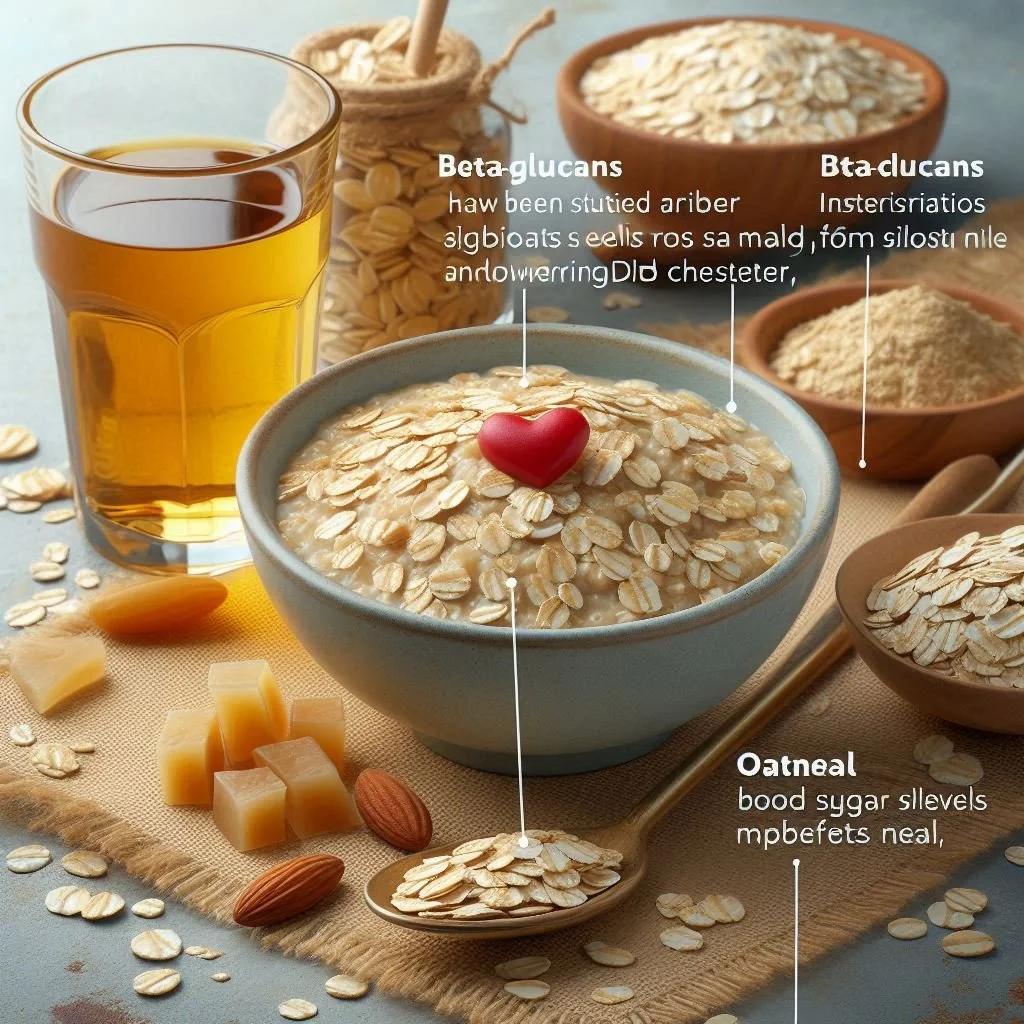Oatmeal and Diabetes
A Primal Health Coach’s Perspective
Oatmeal has traditionally been a staple in many diets around the world, praised for its heartiness and health benefits. However, from a primal health perspective, particularly when addressing dietary needs for people with diabetes, there are nuanced considerations to keep in mind.
Oatmeal’s Nutritional Profile and Benefits
Oatmeal is rich in carbohydrates, but it also contains a specific type of soluble fiber known as beta-glucans. This fiber has been studied extensively and has shown potential in moderating blood sugar levels post-meal and lowering LDL cholesterol (Reyna, 2020). Beta-glucans slow down the digestion process, which can help prevent sharp spikes in blood sugar, making it a generally good option for people with diabetes when consumed in moderation (Amelia Sherry, 2020).
Choosing the Right Oatmeal Varieties
Steel-Cut or Whole Oat Groats: These are the least processed forms of oats, retaining more of their natural fiber, nutrients, and texture. They have a lower glycemic index compared to more heavily processed oats, meaning they have a slower impact on blood sugar levels.
Overnight Oats: This is a no-cook method where oats are soaked overnight in a liquid such as water, almond milk, or coconut milk. Soaking helps in reducing the phytate content which may enhance mineral absorption and also makes the oats easier to digest. Using steel-cut or whole oat groats for overnight oats can make them an even healthier option.
Enhancing Oatmeal with Nutritious Additions
Flaxseeds and Chia Seeds: Both seeds are high in omega-3 fatty acids and fiber, which can further slow the digestion of carbohydrates and help stabilize blood sugar levels. They also add a nice texture and are packed with antioxidants.
Shredded Coconut: Adding unsweetened shredded coconut provides healthy fats and fiber, enhancing the satiety factor of your oatmeal while imparting a subtly sweet, nutty flavor.
Nuts and Nut Butters: Almonds, walnuts, or a spoonful of almond or cashew butter not only add richness and depth to the flavor but also contribute healthy fats and proteins, which are essential for balancing macronutrients.
Protein Powders: Stirring in a scoop of your preferred protein powder, such as whey or a plant-based alternative, can increase the protein content, making oatmeal a more balanced meal option.
Optimal Preparation and Pairing
Savory Options: While typically eaten sweet, oatmeal can be made savory. Consider cooking steel-cut oats in a low-sodium vegetable or chicken broth and topping them with a poached egg and sautéed greens. This method transforms oatmeal into a nutrient-dense, low-sugar meal.
Spices: Adding spices such as cinnamon, nutmeg, or turmeric can enhance the flavor without adding sugars. Cinnamon is particularly beneficial as it can help control blood sugar spikes.
Incorporating Oatmeal Strategically
For those following a primal lifestyle, it’s important to integrate oatmeal in a way that aligns with overall dietary goals:
Moderation and Monitoring: Due to its carbohydrate content, the quantity of oatmeal should be considered, especially for those who are insulin resistant or managing diabetes.
Whole Food Focus: Always pair oatmeal with other whole foods to ensure a balanced intake of nutrients.
By selecting the right type of oats and combining them with nutrient-rich foods, you can enjoy the health benefits of oatmeal without diverging from a primal health approach. These strategies ensure that every bowl of oatmeal supports your health goals, providing sustained energy, essential nutrients, and aiding in overall well-being.
Dietary Adjustments and Recommendations
For diabetics, particularly those following a primal health approach, it is crucial to monitor carbohydrate intake closely. Oatmeal, being carbohydrate-dense, should be consumed in moderation and in the context of one’s overall carb budget for the day. Integrating high-fiber, nutrient-dense foods like vegetables and quality proteins will support better blood sugar control and provide essential nutrients.
Potential Risks with Oatmeal
While oatmeal offers health benefits, it’s also important to recognize that it can still raise blood sugar levels, particularly in those with less well-controlled diabetes. The primal health approach emphasizes the importance of individualized dietary planning. What works for one person may not work for another, so closely monitoring blood glucose levels after eating oatmeal is crucial to understanding its impact. Inflammatory Considerations and Alternatives Oatmeal, being a grain, can contribute to inflammation in sensitive individuals. Those adhering to a primal lifestyle might explore other breakfast options that are lower in carbohydrates and grains, such as:
A breakfast high in proteins and fats, such as eggs cooked with vegetables in olive oil or coconut oil.
Smoothies made with low-glycemic fruits, greens, nuts, and seeds for a nutrient-packed start to the day.
Conclusion
While oatmeal can be part of a diabetic diet, from a primal health coaching perspective, the emphasis is on whole, unprocessed foods and maintaining a diet that stabilizes blood sugar levels, reduces inflammation, and supports overall health. For those choosing to include oatmeal, selecting the least processed form and combining it with proteins and fats can make it a healthier choice. As always, individual responses vary, so monitoring and adjustments are key.
References
Reyna, N.Y. (2020). “Health Benefits of Oatmeal.” Nutrition Studies.
Sherry, A. (2020). “Is Oatmeal Good for People with Diabetes?” MSN.com.
If you're ready to take the next step toward optimal health and want to learn more about how to nourish your body the primal way, I’m here to help guide you through the maze of modern nutrition. Book a free consultation with me today, and together we'll tailor a health and wellness plan that's as unique as you are. Let’s start your journey to vibrant health now—because your best self awaits!




